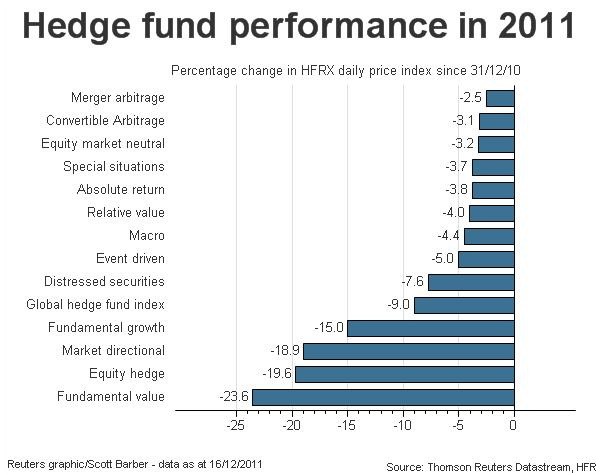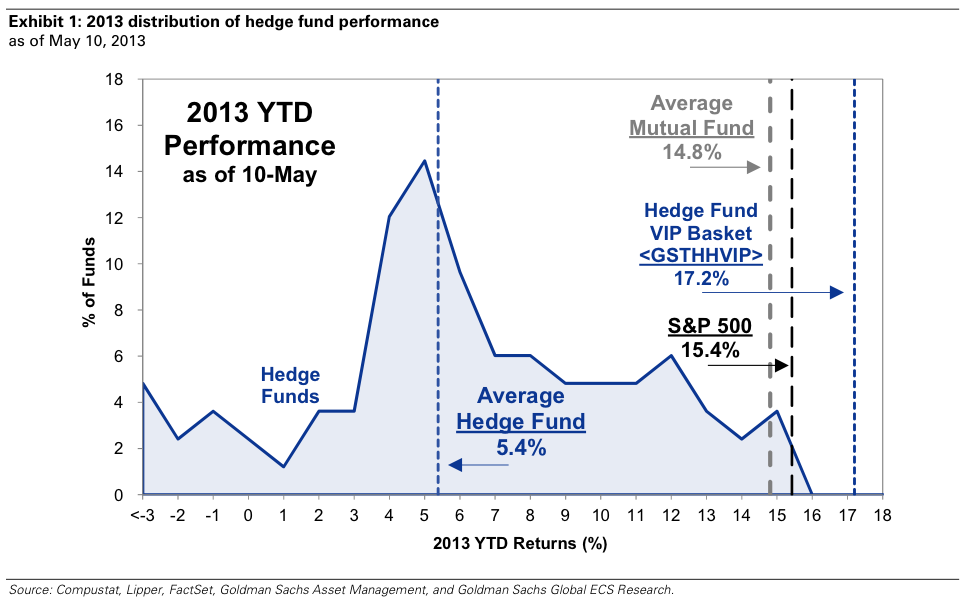Hedge Fund Performance
Post on: 5 Май, 2015 No Comment

George Soros and Julian Robertson have been the Tom Cruise and Mel Gibson of the hedge fund industry for the last two decades. These two well-known money managers have graced the covers of financial publications and investors around the world have closely watched where they invest their money. While both men have reduced their trading activity recently, their performances have been impressive. In 1986, Julian Robertson�s Tiger Fund was featured in Fortune Magazine for producing 43% annual returns, after fees, for its first six years of existence. A few years later, Soros made headlines for selling short the British pound and forcing Great Britain to eventually withdraw its currency from Europe�s ERM, a humiliating blow for that country.
In essence, the hedge fund industry grew up around these two men who helped establish an image that hedge fund managers can produce excess market returns with little or zero beta. The number of hedge funds ballooned from 37 in 1985 to 987 by 1997. Some estimates put the total assets under management at $1 trillion in 2000. Despite the mysterious and secretive world surrounding this area of high finance, this research project analyzes whether hedge funds, in fact, do generate significant returns after adjusting for risk. Introduction
Four distinct features make hedge funds unique from other investment vehicles: trading strategy, leverage, regulation and compensation. Information is very difficult to obtain about hedge funds, but it is often easiest to compare them to mutual funds to illustrate these characteristics.
1. Trading Strategy
Hedge funds normally adopt a dynamic trading strategy that can involve very short-term strategies, sometimes buying and selling in the market on an intraday basis, or taking a position before a scheduled government report and getting out of the position after the report is released. Traditional mutual funds tend to buy and hold stocks for an extended period.
2. Leverage
Hedge funds typically leverage their bets by margining their positions and by using short sales. Long Term Capital Management, while an extreme example, shows the extent to which hedge funds lever their positions. In contrast, the use of leverage is often limited if not restricted for mutual funds.
3. Regulatory Environment
This is probably the key differentiating factor for hedge funds and contributes to the �mystery� surrounding the industry. Hedge funds are considered private investment vehicles for wealthy individuals and institutional investors. They are formed as limited partnerships whereby the investors are considered limited partners and the money managers are general partners. Hedge funds are not allowed to advertise. Many funds are offshore for tax and regulatory reasons. The U.S. Securities Act of 1933 requires certain disclosure reports for firms issuing publicly traded securities. But under rules of the Securities and Exchange Commission, which oversees publicly traded securities, hedge funds can claim the status of a �private placement,� so they are exempt from most registration and disclosure requirements. To qualify for the exemption, hedge funds must not have more than 35 �nonaccredited� investors. The SEC defines an accredited investor as someone with more than $1 million in wealth or earned more than $200,000 in the previous two years. Under another law, the Investment Company Act of 1940, the SEC can regulate mutual funds. But hedge funds get around this law by having no more than 99 investors and by not making public offerings. The law has been updated and hedge funds can now have up to 499 investors with more than $5 million each in assets.

4. Compensation
Compensation is broken into two categories: a 1-2% management fee and a 15-20% �incentive� fee, based on the profits. The incentive fee, which is similar to those paid to venture capital firms, gives money managers a disproportionate incentive to shoot for much higher returns. The upside potential is similar to an option the manager gets for running the fund. It is likened to a quarterback throwing a �Hail Mary� pass to try and get a touchdown, even though odds of success aren�t as great. The managers might take greater risks because they are not as severely punished for poor returns. However, hedge fund managers typically invest a large percentage of their own money into the funds, so that may limit their aggressive investing.
CSFB/Tremont Hedge Fund Index
The primary source of data was the CSFB/Tremont Hedge Fund Index, currently the industry’s only asset-weighted hedge fund index. Asset weighting, as opposed to equal weighting, provides a more accurate depiction of an investment in the asset class. The index uses the TASS+ database, which tracks over 2600 funds. The universe consists only of funds with a minimum of US $10 million under management and a current audited financial statement. Funds are separated into primary sub- categories based on their investment style. The Index in all cases represents at least 85% of the assets under management in the universe. CSFB/Tremont analyzes the percentage of assets invested in each sub-category and selects funds for the Index based on those percentages, matching the shape of the Index to the shape of the universe. The Index is re-balanced monthly. Funds are not removed from the Index until they are liquidated or fail to meet the financial reporting requirements. The objective is to minimize survivorship bias. Funds are re-selected quarterly
CSFB/Tremont Hedge Fund Index consists of a master index and series of sub-indices that represent the historical returns of this asset class. The series of sub-indices is designed to track the primary categories of investment styles used by hedge fund managers. Each sub-index is calculated using the same exacting methodology as the master Index. The sub-index categories are defined as follows:














